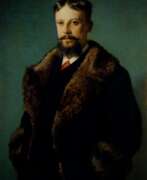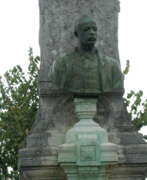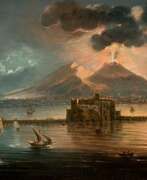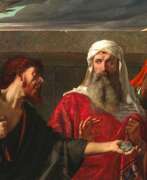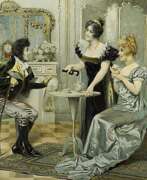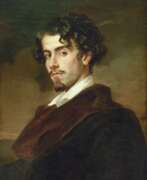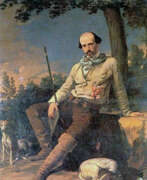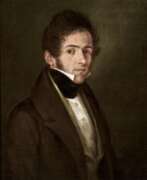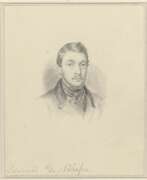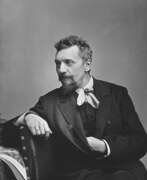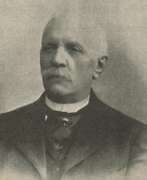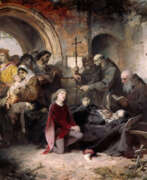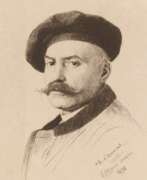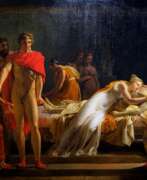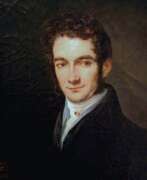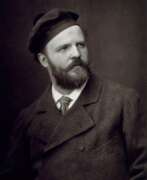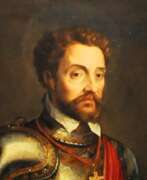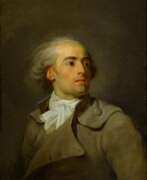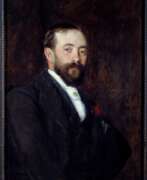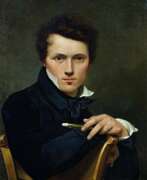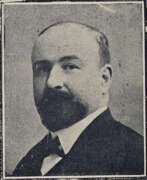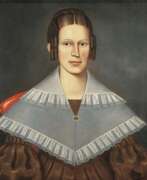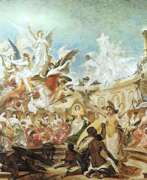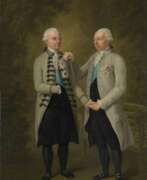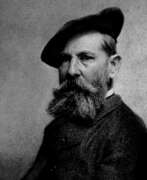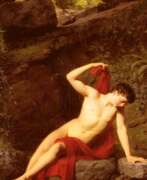History painting Romanticism
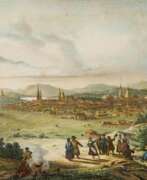

Jean-Victor Vincent Adam was a French painter and lithographer.
Adam came from a dynasty of artists and studied at the École des Beaux-Arts in Paris. He painted views of various cities, including Russian Kazan and Yekaterinburg, as well as battle scenes from Napoleon's military campaigns. Collections of images of French military costumes prepared by Adam were published. His genre paintings with hunting scenes and animals are also known.
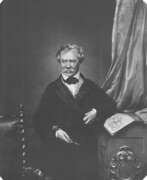

Albrecht Adam was a Bavarian painter of the first half of the 19th century. He is best known for the fact that as a member of Napoleon's Grand Army he took part in the campaign against Russia in 1812 as the official artist of the headquarters of the IV (Italian) Corps. Throughout the campaign, the artist made sketches and drawings, capturing many of the important events of the campaign. Later, many of these sketches became the basis for full-fledged paintings, and to subjects from the Napoleonic wars, which he witnessed, Adam addressed until the end of his very long life.
Albrecht Adam was also the author of memoirs, in which he described in detail the Battle of Borodino and a number of other key events of the War of 1812.


Kazimierz Alchimowicz was a Polish painter who is considered one of the last Romantics in Polish painting. Among other things, he illustrated Adam Mickiewicz's poem Pan Tadeusz with a series of twelve paintings (1898) and prints (1903). He was the elder brother of the Polish painter Hiacynt Alchimowicz.
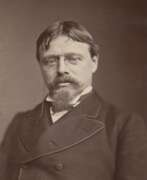

Lawrence Alma-Tadema was a Dutch-British artist renowned for his detailed and romanticized portrayals of ancient civilizations, particularly Rome and Egypt. His meticulous attention to historical accuracy and the lavish representation of marble and luxurious settings distinguished his work. Notably, his fascination with ancient cultures was sparked by his honeymoon visit to Italy and Pompeii, influencing his artistic focus for decades.
Lawrence Alma-Tadema's early work, such as "The Education of the Children of Clovis," showcased his interest in historical subjects and established his reputation. This painting, alongside others like "The Sad Father," demonstrates his commitment to historical detail and narrative depth.
After moving to England due to the Franco-Prussian War and personal reasons, Lawrence Alma-Tadema's career flourished. His works, characterized by their bright palette and refined details, resonated with Victorian audiences, earning him considerable fame and financial success. He was knighted in 1899 and continued to be a pivotal figure in Victorian art, influencing peers and future generations alike.
Lawrence Alma-Tadema's legacy experienced a decline posthumously but saw a resurgence in the 1970s. Today, he is celebrated for his contributions to the Neoclassical and Victorian art movements, with his works featured in prominent collections worldwide, including the Getty Museum and the Tate Gallery.
If you are fascinated by Lawrence Alma-Tadema's artwork and wish to stay updated on sales and auction events related to his works, consider signing up for updates. This will ensure you remain informed about new opportunities to explore and possibly acquire pieces of his illustrious legacy.


Henry Andrews was a British painter of genre and historical scenes.
He is best known for his imitations and adaptations of Watteau, painting mainly romantic garden scenes as well as portraits. Andrews exhibited at the Royal Academy, as well as at the British Institution and the Society of British Artists.
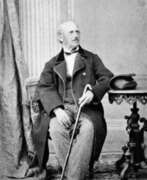

Hermann Anschütz was a German painter of the 19th century. He is known as a painter and teacher who belonged to the Düsseldorf School of painting. He was a professor at the Munich Academy of Fine Arts.
Anschütz painted mythological and historical subjects, as well as landscapes and portraits. A number of his canvases were devoted to oriental themes. In 1860 he was one of the founders of the Munich Christian Art Association.
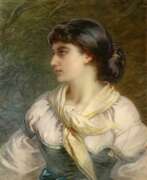

Guido Bach was a German portrait painter who focused mainly on watercolor painting. Bach traveled to Italy, Bohemia, and also visited Egypt. He created portraits and depictions of Italian village life, battle scenes, and images of North African Arab life.
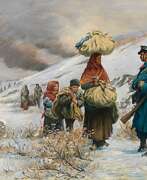

Rodolphe Auguste Bachelin was a Swiss landscape, history and portrait painter as well as a writer, historian and art critic.
He was interested in the Lombardy War of 1859 and in particular in the Franco-Prussian War of 1870 to 1871, which provided him with several subjects with its troop surge at Les Verrières. The Neuchâtel painter was greatly influenced by the writings of Rodolphe Töpffer and aspired to become a Swiss national painter.
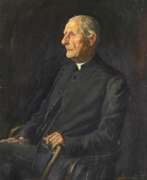

Sabine Baring-Gould was a Victorian British clergyman, poet, writer and folklorist.
He traveled extensively in Europe, studied at Clare College, Cambridge, was ordained in the Church of England in 1864, and was appointed vicar at Horbury. Baring-Gould was a polyglot and knew six languages. Despite his ministry, he had a serious interest in supernatural phenomena and in 1865 published a book called The Book of Werewolves.
In addition to this, Baring-Gould was interested in a wide range of subjects. His work is diverse and covered theology, history, poetry, hymns, fiction, biography, travel, social commentary, and folklore. Baring-Gould collected the folk songs of old English singers, personally visiting them and recording the words and music. In 1889 he published a collection of Songs of the West in four parts, of which he was proud, and also wrote several patriotic hymns.
Baring-Gould was a very prolific writer: during his life he wrote many novels, published short stories in periodicals, the popular "Curious Myths of the Middle Ages," and others, his bibliography numbering some 1,250 works.
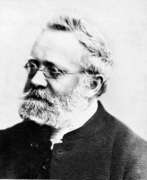

Peter Becker is a German landscape painter, engraver, and lithographer. In his many landscape works he romanticizes the German forest and enlivens it with historical characters. He also painted genre scenes and depicted city streets.
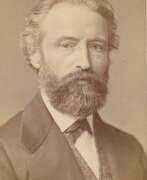

Karl Ludwig Friedrich Becker was a German historical painter of the 19th century.
Becker studied at the Berlin Academy of Fine Arts, and later in Munich he perfected himself under Heinrich Maria von Hess and in Italy. On his canvases the artist depicted mainly scenes from Venetian life in the XVI and XVII centuries.
Karl Becker was elected a member of the council of the Berlin Academy of Arts, and later honorary president of the Academy, as well as a member of the Royal Belgian Academy.
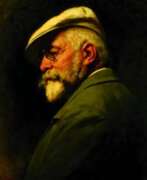

Wohl Gyula Benczúr was a Hungarian painter, recognized as a master of scenes from the history of his native Hungary.
He studied drawing with the Austrian historical painter Franz Heiling, and from 1861 he studied painting at the Royal Bavarian Academy in Munich. Later in his homeland he took up a professorship at the School of Painting.
Benczúr painted portraits of kings, aristocrats and other contemporaries, but his specialty remained large-scale historical paintings with a play of light and shadow. He also took on ancient and biblical themes, as well as genre-based group paintings of families in nature.
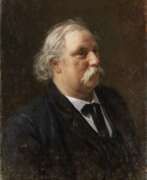

Knud Larsen Bergslien, a Norwegian painter and art teacher, is renowned for his historical paintings, notably "Skiing Birchlegs Crossing the Mountain with the Royal Child." This iconic artwork depicts Birkebeiner skiers rescuing Prince Haakon in 1206, a pivotal moment in Norwegian history.
Bergslien was part of the Düsseldorf school of painting and closely associated with artists Hans Fredrik Gude and Adolph Tidemand. His talent earned him the Order of Vasa from King Oscar II for his painting "The Crowning of King Oscar II in the Nidaros Cathedral." His significant contributions to Norwegian art are showcased in the National Gallery of Norway.
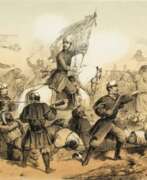

Bernardo Blanco y Pérez was a Spanish lithographer, painter and illustrator.
He studied at the Royal Academy of San Fernando, mainly drawing and lithography, and taught. Bernardo Blanco was one of the artists whose work was included in a series of lithographs on the Spanish-Moroccan War (1859-1860).
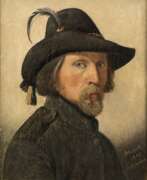

Detlev Conrad Blunck was a German-Danish painter of the first half of the 19th century. He is known as a painter and graphic artist.
Detlev Blunck at the beginning of his career specialized mainly in historical painting, then he moved to the domestic genre and joined the ranks of the masters of domestic realism. Later Blunck devoted his work to religious motifs and developed his own style of painting, which strongly reflected the influence of the Nazarene movement, the German Romantic painters.
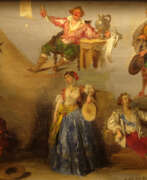

Louis Boulanger was a French Romantic painter, pastellist, lithographer, and poet, celebrated for his contribution to the Romantic Movement and his close associations with notable figures like Victor Hugo. Louis Boulanger's early career was marked by his romantic and allegorical subjects, but it was his shift to more detailed design and classical literature inspiration around 1835 that defined his most productive years. His travels to Spain in 1846 alongside Dumas and others exposed him to the works of masters like Goya and Diego Velázquez, influencing a return to romantic techniques in his later works.
Louis Boulanger's legacy includes the portrayal of several personalities through his portraits, among them George Sand, Victor Hugo, and Petrus Borel, showcasing the influence of various artists including Antoine-Jean Gros and Francisco Goya. Despite some critique for the 'literary' inspiration behind his creations, his pastel sky studies prefigure artists like Paul Huet and Eugène Boudin. Notable works by Louis Boulanger, such as "Supplice de Mazeppa" and "La Ronde du Sabbat," can be found in prestigious French collections, including the Louvre and the Maison de Victor Hugo.
An exhibition titled "Louis Boulanger, peintre rêveur" at the Maison de Victor Hugo, which ran from November 2022 to March 2023, aimed to reintroduce his work, highlighting Boulanger as a central figure in the Romantic circle closely associated with Victor Hugo. This exhibition not only paid tribute to Boulanger but also emphasized his diverse oeuvre, spanning paintings, lithographs, theatrical costume designs, illustrations, and decors, revealing him as one of the main inventors of Romanticism.
If you're interested in the world of art and antiques and wish to stay updated on new product sales and auction events related to Louis Boulanger, signing up for updates is a valuable resource. This subscription will ensure you're informed about the latest opportunities to engage with Boulanger's enduring artistic legacy.


Karl Pavlovich Bryullov (Russian: Карл Па́влович Брюлло́в), a distinguished Russian artist, emerged as a pivotal figure in the world of 19th-century art, blending Western European Romanticism with his Russian heritage to create works that continue to captivate audiences today. His mastery in painting and architecture set him apart, making him a celebrated figure not just in Russia, but across Europe.
Bryullov's acclaim primarily stems from his remarkable ability to infuse his paintings with vibrant life and emotion, a testament to his profound understanding of human expression and the dramatic interplay of light and shadow. His most famous work, "The Last Day of Pompeii," exemplifies this skill, showcasing an epic narrative filled with vivid detail and emotional depth. This masterpiece, which is housed in the State Russian Museum in St. Petersburg, has garnered international praise for its innovative approach to historical painting, merging accuracy with dramatic storytelling.
Beyond "The Last Day of Pompeii," Bryullov's portfolio includes a range of subjects, from majestic portraits to serene landscapes, each bearing his signature blend of realism and romanticism. His works are featured in prestigious galleries worldwide, serving as a testament to his enduring influence on the art world. For collectors and experts in art and antiques, Bryullov's oeuvre offers a fascinating glimpse into the evolution of 19th-century European painting, marked by a unique intersection of culture, art, and history.
For those intrigued by the enduring legacy of Karl Pavlovich Bryullov and his contributions to painting and sculpture, we invite you to sign up for updates. Our subscription service provides exclusive alerts on new product sales and auction events related to this illustrious artist, ensuring that enthusiasts and collectors alike stay informed about opportunities to engage with Bryullov's remarkable works.
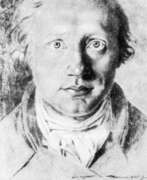

Asmus Jacob Carstens was a Danish-German painter of the late 18th century. He is known as a painter and draughtsman, a representative of classicism and romanticism.
Carstens produced famous narrative and historical paintings, including Plato's Symposium and The Battle of Rossbach, which brought him popularity. His famous huge painting The Fall of Angels, containing 200 figures, made him a professor at the Academy of Fine Arts in Berlin. Carstens preferred pencil, chalk and watercolor, and worked with fresco, rarely using oil. Most of his large-scale projects have been left unfinished or lost. Many of his surviving works exist as drawings.
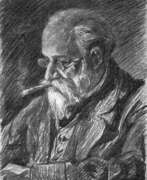

Adolf Iosifovich Charlemagne (Russian: Адольф Иосифович Шарлемань) was a renowned Russian painter, born in 1826 in Saint Petersburg. He excelled in historical, genre, and battle scenes, deeply influenced by his artistic lineage—his father was an architect and his grandfather a sculptor. Educated at the Imperial Academy of Arts under Fyodor Bruni and Bogdan Willewalde, Charlemagne's works are celebrated for their historical accuracy and intricate details.
Charlemagne's notable works include "The Capture of Kazan by Ivan the Terrible" and "The Battle of Kulikovo," which vividly capture significant moments in Russian history. His paintings are known for their meticulous attention to detail, dramatic compositions, and ability to convey the emotional intensity of historical events. These masterpieces are housed in prestigious Russian museums, showcasing his contributions to Russian cultural heritage.
Throughout his career, Charlemagne received numerous accolades, including the titles of Academician and Professor at the Imperial Academy of Arts. His dedication to historical accuracy and artistic excellence made him a prominent figure in Russian art.
For collectors and enthusiasts, owning a piece by Adolf Iosifovich Charlemagne means acquiring a significant part of Russian history. To stay updated on new product sales and auction events related to Charlemagne's works, sign up for our updates today.


Théodore Chassériau was a Dominican-born French Romantic painter noted for his portraits, historical and religious paintings, allegorical murals, and Orientalist images inspired by his travels to Algeria. Early in his career he painted in a Neoclassical style close to that of his teacher Jean-Auguste-Dominique Ingres, but in his later works he was strongly influenced by the Romantic style of Eugène Delacroix. He was a prolific draftsman, and made a suite of prints to illustrate Shakespeare's Othello. The portrait he painted at the age of 15 of Prosper Marilhat, makes Théodore Chassériau the youngest painter exhibited at the Louvre museum.
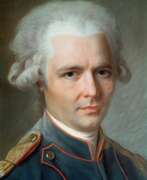

Pierre Choderlos de Laclos, full name Pierre Ambroise François Choderlos de Laclos, was a French politician, inventor, military leader, and writer.
De Laclos initially pursued a military career, but soon abandoned it, deciding that he would achieve greater fame by becoming a writer. He wrote poetry, erotic stories. His first novel "Dangerous Liaisons" (Les Liaisons dangereuses, 1782) immediately made a great impression and caused a mixed reaction in society. This is one of the masterpieces of novelistic literature of the XVIII century, which describes the love affairs of the aristocracy. On its motives, a large number of commentaries were later written, plays were staged and movies were filmed.
Later, Pierre Choderlot de Laclos worked for some time as secretary to the Duke of D'Orleans, writing several treatises on military and political topics. And in 1792 he again joined the army, where under Napoleon he rose to the rank of general, participated in the Rhine and Italian campaigns.


John Heaviside Clark was a Scottish battle painter, marinist and printmaker.
Clark is best known for his aquatint engravings depicting Scottish towns, historically important for their precise attention to detail and concise clear depiction of space. He earned the nickname Waterloo Clark for his sketches of the battlefield of Waterloo, later published as color engravings.
John Clark is the author of A Practical Essay on the Art of Coloring and Drawing Landscapes with Illustrations, published in 1807, and A Practical Illustration of Gilpin's Day, with thirty color plates based on monochrome studies representing different times of day.
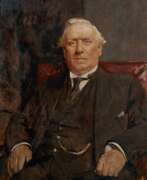

André Edmond Alfred Cluysenaar was a Belgian painter. He was especially known for portraits and female figures. He was member of the Cluysenaar family, descendant from a long line of architects who originated in Aachen. He received his first art lessons from his father, then studied with François-Joseph Navez. Initially, he worked as a sculptor, but devoted himself entirely to painting after 1902. He was firmly grounded in the romantic style at first; producing still lifes and genre scenes, but later turned to impressionism and painted mostly female figures, often semi-nude. He also executed monumental ceiling paintings for the City Hall in Saint-Gilles. During World War I, he lived in London where he established a reputation painting portraits of notable people, including the Royal Family, which were done in a more commercial style using Alfred Stevens as a model. Most of these portraits may be seen in the National Gallery.
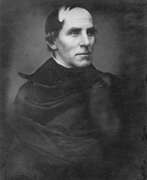

Thomas Cole, an English-born American artist, stands as a foundational figure in the Hudson River School, a movement that significantly shaped the course of American landscape painting. Born in Bolton-le-Moors, Lancashire, England, in 1801, Cole moved to the United States in 1818, where he embarked on a journey that would see him become one of the most influential artists of his time.
Thomas Cole's artistry is renowned for its romantic portrayal of the American wilderness, imbuing his landscapes with a spiritual and almost sublime quality that reflects his deep appreciation for nature. His works, such as "The Course of Empire" series and "The Voyage of Life," not only depict the beauty of the American landscape but also convey profound messages about humanity's relationship with the natural world. These series, showcasing the rise and fall of civilizations and the stages of human life against the backdrop of the natural world, highlight his philosophical and environmental concerns.
His technique of sketching directly from nature before creating detailed, idealized compositions became a hallmark of his style and influenced future generations of artists, including Frederic Edwin Church and Asher B. Durand. Thomas Cole's legacy extends beyond his paintings, as he played a pivotal role in the development of an art movement that celebrated the unique character of the American landscape, which was seen as a reflection of the nation's identity.
Thomas Cole's works are preserved in prestigious institutions like the New-York Historical Society, the Museum of Fine Arts in Boston, and the Metropolitan Museum of Art, serving as enduring testaments to his artistic genius and his profound connection to the American landscape.
For collectors and art enthusiasts, understanding Thomas Cole's influence and the themes he explored offers invaluable insights into the evolution of American landscape painting. If you're interested in staying updated on exhibitions, sales, and events related to Thomas Cole's works, consider signing up for updates to deepen your appreciation and knowledge of this iconic artist's contributions to American art and culture.
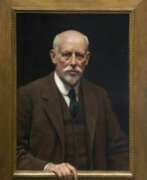

John Maler Collier was a British painter and writer. He painted in the Pre-Raphaelite style, and was one of the most prominent portrait painters of his generation. Both of his marriages were to daughters of Thomas Henry Huxley. He was educated at Eton College, and he studied painting in Paris with Jean-Paul Laurens and at the Munich Academy starting in 1875.
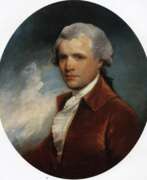

John Singleton Copley was an Anglo-American painter, active in both colonial America and England. He was probably born in Boston, Massachusetts, to Richard and Mary Singleton Copley, both Anglo-Irish. After becoming well-established as a portrait painter of the wealthy in colonial New England, he moved to London in 1774, never returning to America. In London, he met considerable success as a portraitist for the next two decades, and also painted a number of large history paintings, which were innovative in their readiness to depict modern subjects and modern dress. His later years were less successful, and he died heavily in debt.


Richard Corbould was an English artist. He was a painter, in oil and watercolour, of portraits, landscape, and occasionally history; of porcelain, and miniatures on ivory, and enamels; and was furthermore an important illustrator of books renowned for his Napoleonic sketches of Ships, and a follower of the old masters. From 1777 to 1811 he was a constant contributor to the Royal Academy.


Auguste Couder was a French painter, celebrated for his contributions to the world of art and culture. Couder became a prominent figure in French classicism, creating works that resonate with historical and cultural significance. His education under masters like Jean-Baptiste Regnault and Jacques-Louis David laid the foundation for a career that would leave a lasting imprint on the art world.
Auguste Couder's artistry is not confined to his paintings; he also contributed theoretical writings to the art community, enhancing the intellectual discourse of the time. His notable works, such as "The Siege of Yorktown" and "Muhammad Ali of Egypt," are celebrated for their intricate detail and historical depth, offering viewers a window into the past. These pieces, along with others like "Water, or the Fight of Achilles against Scamander and Simoeis," are housed in prestigious museums, allowing the public to engage with history through Couder's eyes.
His legacy extends beyond his art, as Auguste Couder was an influential figure in French classicism, contributing to the Dictionnaire des Beaux-Arts and authoring insightful essays on art. His works are displayed in esteemed locations like the Museum of the History of France in Versailles and the Louvre, showcasing his versatility in portraying historical and mythical subjects.
For collectors and art enthusiasts keen on exploring the depths of French classicism and historical painting, Auguste Couder's oeuvre offers a rich tapestry of narrative and beauty. To stay informed about upcoming sales and auction events featuring Couder's works, sign up for updates and delve into the world of a master who painted history with a brushstroke of genius.
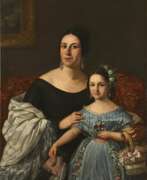

Antonio Gómez Cros was a Spanish painter, lithographer and decorator.
Antonio began studying painting at the Academy of Fine Arts of San Carlos in Valencia and completed his studies at the Royal Academy of Fine Arts of San Fernando. He was a representative of early romanticism with signs of classicism.
Antonio Gómez Cros specialized in historical scenes and was a recognized portrait painter. In 1846 he was appointed honorary chamber painter to Elizabeth II and painted several famous historical, battle and religious paintings in this position. The artist also painted walls and curtains in palaces and theaters.
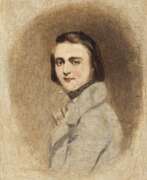

Richard Dadd was an English painter of the Victorian era, noted for his depictions of fairies and other supernatural subjects, Orientalist scenes, and enigmatic genre scenes, rendered with obsessively minuscule detail. Most of the works for which he is best known were created while he was a patient in Bethlem and Broadmoor hospitals.
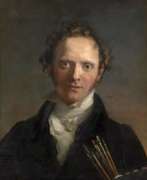

George Dawe was an English portrait artist, celebrated for his depictions of Russian military leaders. Born in 1781 in London, Dawe was a prodigy in engraving under his father's tutelage before shifting his focus to painting. He gained recognition at the Royal Academy of Arts and became a member in 1814.
Dawe's career reached international prominence when he moved to Saint Petersburg in 1819, following a commission from Tsar Alexander I. There, he created over 300 portraits for the Military Gallery at the Winter Palace, capturing the visages of Russia's elite during Napoleon's invasion. His works, praised for their historical value and artistic merit, are still displayed in the Hermitage Museum today.
Despite his death in 1829, Dawe's legacy persists, particularly in Russia, where he is regarded as a key figure in military portraiture. His works remain a significant part of cultural exhibitions and continue to attract scholars and art enthusiasts.
If you're fascinated by the rich history of art and the stories behind iconic portraits, consider signing up for updates on George Dawe. Stay informed about new sales and auction events that feature his masterful works. Your subscription will keep you connected to the world of historical art and its vibrant market.
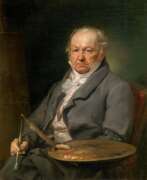

Francisco José de Goya y Lucientes was a Spanish romantic painter and printmaker, celebrated as the most pivotal Spanish artist of the late 18th and early 19th centuries. Born in Fuendetodos, Aragon, Spain, on March 30, 1746, Goya's work reflects a tumultuous period of history, intertwining the personal, political, and social upheavals of his time with a bold and innovative artistic vision. His early career was marked by portraits of the Spanish aristocracy and royalty, as well as Rococo style tapestry cartoons for the royal palace. However, following a severe illness in 1793 that left him deaf, his art took on a darker and more pessimistic tone.
Goya's oeuvre is vast, encompassing around 700 paintings, 280 prints, and several thousand drawings, through which he depicted a wide range of subjects from the whimsical to the macabre. Notable among his works are "The Naked Maja," "The Clothed Maja," "The Family of Charles IV," "The Third of May 1808: The Execution of the Defenders of Madrid," and "Saturn Eating His Children." His etchings, particularly the series "Los Caprichos" and "The Disasters of War," are celebrated for their intricate detail, emotional depth, and critical social commentary.
Goya's contribution to art goes beyond his mastery of painting and printmaking. He is often considered the bridge between the Old Masters and modern art, introducing themes and techniques that would influence countless artists in the centuries to follow. His ability to capture the essence of his era, the human condition, and the complexities of his own psyche, makes his work universally relatable and enduringly relevant.
His most famous paintings are housed in prestigious museums worldwide, including the Museo del Prado in Madrid, which holds an extensive collection of his works. The Prado's collection serves as a testament to Goya's significant impact on art and culture, offering insight into the artist's unique perspective on the world around him.
For collectors and experts in art and antiques, Francisco de Goya's legacy is a beacon of artistic innovation and historical significance. His works not only adorn the walls of museums but also continue to inspire and provoke thought among audiences across the globe.
For updates related to Francisco de Goya, including new product sales and auction events related to his works, sign up for our newsletter. Stay informed on the latest offerings and opportunities to add to your collection of this legendary artist's works.
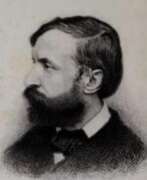

Charles Corneille Auguste de Groux or Charles Degroux was a French painter, engraver, lithographer and illustrator. As he moved to Belgium at a young age and his whole career took place in Belgium he is usually referred to as a Belgian artist. His depictions of scenes from the life of the disadvantaged and lower-class people of his time mark him as the first Belgian social realist painter. These works made him the precursor of Belgian Realist artists such as Constantin Meunier and Eugène Laermans. De Groux worked in different media, including oil painting, watercolor, pastel, engraving and lithography. He started out as a painter of history and religious scenes in the Romantic style then prevalent in Belgium. He later developed his own realist style which shows the influence of Courbet as well as genre painters of the 17th century. De Groux' social realist works contain many religious overtones and references.
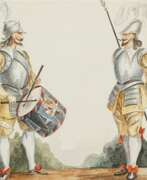

Armand de Pasmond was a French naval officer and artist.
Famous is his book Cahier de Costumes Commencé en 1836 et fini en 1840, drawings for which he made while traveling in the Mediterranean, North Africa and Reunion Island. The book contains many images of military uniforms, especially naval uniforms, and of soldiers in Sardinia, Corsica, and Algeria. The album has several landscapes of Morocco and Algeria, which had just, in 1833, become a French colony. With beautiful watercolors and sketches of views of Africa, soldiers and locals, and drawings of accurately drawn ships, this album by Pasmond is a testament to life in Algeria at a particularly important stage in its history.
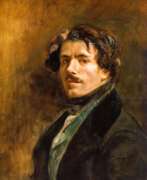

Ferdinand Victor Eugène Delacroix was a French Romantic artist, celebrated for revolutionizing the art world with his expressive brushstrokes and masterful use of color. Delacroix's art is characterized by its emotional intensity, vibrant colors, and dramatic themes, often drawing inspiration from historical, literary, and exotic sources. His innovative techniques and passion for expressive content made him a pivotal figure in the transition from the Neoclassical to the Romantic movement, influencing both the Impressionist and Symbolist movements that followed.
Delacroix's fascination with the exotic and the sublime led him to North Africa in 1832, where he captured the spirit and colors of Moroccan life, influencing his later works with themes of orientalism. This trip inspired masterpieces such as "Women of Algiers in their Apartment" (1847-1849), showcasing his ability to blend vivid color with intricate detail to evoke a sense of place and culture. His masterpiece, "Liberty Leading the People" (1830), is emblematic of his political engagement and artistic audacity, capturing the spirit of the 1830 revolution with a realism and fervor that resonated with the public and critics alike.
Delacroix's legacy extends beyond his paintings. As a muralist and lithographer, he left a significant mark on public and private art collections, with works displayed in prestigious institutions like the Louvre. His impact on the art world is seen in his influence on subsequent generations of artists, from the Impressionists' exploration of color and light to the Symbolists' fascination with dreamlike and exotic themes.
For collectors and experts in art and antiques, Delacroix represents not only a high point in Romantic art but also a bridge to modern artistic expressions. His works, housed in museums around the world, continue to inspire and captivate audiences with their intensity and beauty.
If you're passionate about Delacroix's contribution to art and culture, consider subscribing for updates on new product sales and auction events related to this iconic artist. Stay informed on opportunities to add a piece of art history to your collection.
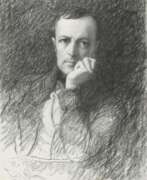

Paul Delaroche was renowned for his meticulously detailed historical scenes that captured both the essence and drama of bygone eras. Delaroche's work bridged the Neoclassical and Romantic movements, bringing to life figures and moments from both English and French history with a narrative intensity that resonated across Europe.
Paul Delaroche's education under the influential history painters Antoine-Jean Gros and Watelet instilled in him a profound understanding of historical accuracy and dramatic composition. His debut at the Paris Salon in 1822 marked the beginning of a highly successful career in which he received widespread acclaim, particularly for his poignant portrayal of "The Execution of Lady Jane Grey" in 1834, a piece that remains one of his most celebrated works.
Throughout his career, Paul Delaroche was committed to the educational aspect of art. In 1833, he became a professor at the École des Beaux-Arts in Paris, influencing a generation of artists with his emphasis on historical fidelity and narrative depth. His major works, like the grand mural "The Hemicycle," which he completed between 1837 and 1841, showcased his talent for orchestrating large-scale compositions that featured an array of historical figures.
Paul Delaroche's approach to history painting was characterized by a "philosophical analysis" of events, aiming to link historical truth with the nineteenth-century understanding of time and morality. His attention to detail and the emotional gravity of his subjects helped forge a visceral connection with viewers, making his works a staple in both public exhibitions and private collections.
For collectors and enthusiasts wishing to delve deeper into Delaroche's legacy or view his works, ongoing exhibitions and collections can be accessed through various art galleries and museums worldwide. To stay informed about such events and opportunities, consider signing up for updates focused on Paul Delaroche's works and their exhibition schedules.


Pierre-Louis Delaval was a French artist, best known for his painting Can Gao, Chinese from Cayenne.
Early in his career the artist imitated Giroud-Triozon in his work, but later showed himself as a brilliant colourist and designer, though without much talent or originality.
His contemporaries felt that he was best suited to historical and religious subjects. Portraits are now considered the most valuable part of Pierre-Louis Delaval's legacy.
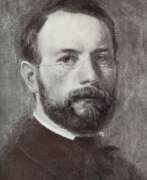

Ludwig des Coudres was a German history and portrait painter. He also served as a Professor at the Academy of Fine Arts, Karlsruhe. His son, Adolf Des Coudres, was a well-known landscape painter. In 1836, he began studying architecture at the new polytechnic school. The following year, he was able to begin studies at the Kunsthochschule. Dissatisfied with the school's emphasis on the Nazarene style, he and two of his friends left to start their own studio and teach themselves. Shortly after, he went to study at the Academy of Fine Arts, Munich. In 1843, he went to spend two years in Rome. Then he studied at the Kunstakademie Düsseldorf. It was there he turned to portrait painting. In 1854 he became the first Director of the Academy in Karlsruhe, organizing its operations and establishing the curriculum.


Gustave Doré, full name Paul Gustave Louis Christophe Doré, was a French painter, sculptor, graphic artist, illustrator, and cartoonist.
Doré was very industrious and prolific: he created more than 10,000 illustrations for art books as well as the Bible. He decorated the works of Rabelais, Balzac, Cervantes, Dante and Milton with his lively drawings, making Doré's name famous. He had a special gift for illustrating nature and fairy tales.
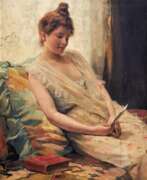

Auguste Frédéric Dufaux the Younger was a Swiss painter and sculptor.
Auguste's father, painter and sculptor Frédéric Guillaume Dufaux (1820-1872), taught him to draw, then he entered the Geneva School of Fine Arts, continued his studies in Paris and Florence.
Dufaux painted lovely female portraits in genre and intimate scenes, children playing, and many depictions of nude women, often near water. He lived in Paris from 1876 to 1891 and participated in the Salon des Artistes Français. From his travels in Egypt and Algeria, Dufaux brought back paintings of local exotic subjects. Dufaux also worked on a panoramic painting of the French Army's entry into Le Verrière and executed several sculptures of famous personalities.
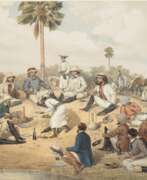

John Dunlop was a British physician and artist.
As Assistant Surgeon of His Majesty's 32nd Regiment, John Dunlop participated in and witnessed the Siege of Multan, Pakistan, a five-month standoff between the city and state of Multan and British East India Company troops in 1848. He made numerous sketches from the scene. Based on his drawings, a work entitled Multan during and after the siege was published. It included 21 drawings by John Dunlop, lithographed by Andrew Maclure, with a descriptive and historical account of the siege.
The siege lasted from April 19, 1848, when a rebellion in the city against a ruler imposed by the East India Company led to the outbreak of the Second Anglo-Sikh War, until January 22, 1849, when the last defenders surrendered.
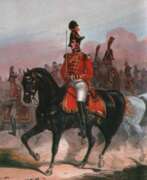

Heinrich Ambros Eckert was a German battle painter.
He studied painting at the Academy of Fine Arts in Munich and specialized in military subjects. Eckert worked with the painter Dietrich Monten on illustrations for a publication about the German Federal Army, which included two hundred lithographs. The two artists also prepared drawings for a series of color lithographs of Russian military uniforms published as part of the Sämmtliche Truppen von Europa, published in parts between 1838 and 1843 with German and French signatures.
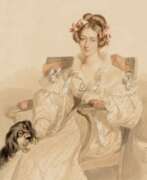

Emily Eden was a British writer and poet, as well as an amateur painter.
Emily Eden, daughter of William, first Baron Auckland, accompanied her brother, George, Lord Auckland (1784-1849), to India, where he served as Governor-General from 1835-1842. A gifted amateur artist and writer, Eden recorded her observations of life in India during this period in the form of letters and an extensive collection of sketches. On her return to England in 1842, Eden published her work. It chronicles Indian princes and members of the higher castes, as well as their servants, their families, and religious believers, Pathans, Tibetans, and others. In addition, she has carefully and accurately described the political events she witnessed.
Emily Eden also published two novels that wittily and satirically describe life in England in the early 19th century.
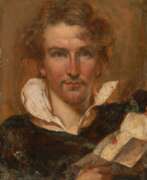

William Etty was an esteemed English painter renowned for his history paintings, especially those containing nude figures. He was recognized as the first significant British artist to focus on nudes and still lifes. Despite facing criticism for the perceived indecency of his work, William Etty achieved both commercial success and critical acclaim, particularly after his painting "Cleopatra's Arrival in Cilicia" in 1821, which showcased his skill in painting realistic flesh tones.
William Etty's journey in art began after he completed an apprenticeship in printing, moving to London to join the Royal Academy Schools in 1807. There, he was influenced by the works of Venetian artists and the teachings on history painting, emphasizing the works of Titian and Rubens. By 1825, his reputation was solidified with his election as a Royal Academician, a testament to his success and impact on the art world.
His works, often focused on mythological or historical subjects, are celebrated for their sensuous portrayal of the nude form. Despite facing backlash for his subject matter, William Etty remained a popular figure throughout his life. His legacy lives on in collections like the York Art Gallery, which holds a significant number of his pieces, reflecting his dedication to painting, particularly the human figure in its most natural form.
For art collectors and experts, William Etty's oeuvre offers a unique exploration of the nude form, blending historical and mythological narratives with lifelike realism. If you're interested in learning more about Etty's work and staying updated on exhibitions or sales featuring his paintings, consider subscribing for updates dedicated to his artistry. This subscription will keep you informed about new discoveries, auction events, and exhibitions related to William Etty's enduring legacy.
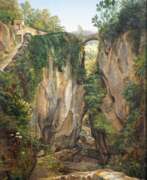

Johann Joachim Faber was a German landscape painter and printmaker. He initially worked on historical subjects. During his travels to Italy he became interested in landscape painting, in which he became known.
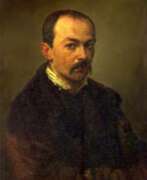

Pavel Andreyevich Fedotov (Russian: Павел Андреевич Федотов), a pioneering Russian realist painter, was born on July 4, 1815, in Moscow, Russia. He is celebrated as the founder of Russian genre painting and critical realism, capturing the essence of Russian society with sharp satire and insight. His works, including notable pieces like "The Major's Marriage Proposal" and "The Gamblers," reflect a keen observation of social conditions and human interactions, often infused with humor and moral critique.
Fedotov's artistic journey began in the military, where he served as an officer before fully dedicating himself to art. His transition from military life to art was marked by his attendance at the Imperial Academy of Arts in St. Petersburg. Initially working with pencil and watercolor, he later shifted to oils in 1846, a medium through which he achieved great success and recognition.
Tragically, Fedotov's life was cut short when he died in a mental clinic in 1852 at the age of 37, following a period of intense psychological distress. Despite his brief career, his legacy lives on, influencing future generations of Russian artists and continuing to captivate audiences with his vivid portrayals of 19th-century Russian life.
For those interested in exploring the profound depth and enduring impact of Fedotov's work, signing up for updates on exhibitions and auctions of his art could provide valuable insights and opportunities to engage with his masterpieces.
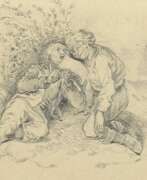

Otto Clemens Fikentscher the Elder was a German painter, draughtsman and illustrator of the Düsseldorf School. Although it is unclear whether he is related to the artist Otto Fikentscher, who was married to Jenny Fikentscher, Otto Fikentscher (the Elder) studied at the Düsseldorf Art Academy and specialised in historical painting and the depiction of horses in battle scenes. He was a member of the artists' association Malkasten and served as a war correspondent during conflicts such as the German-Danish War and the Franco-Prussian War. Fikentscher's works were reproduced in popular magazines and showed his lively and dynamic style.
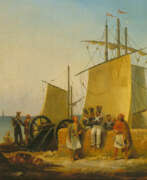

Noel-Dieudonné Finart was a French painter and draftsman.
A painter of battle and war scenes, Finart carefully sketched the ammunition and equipment of foot soldiers and cavalry, depicting the historical events of Napoleon's campaigns in Russia and the Middle East. He also painted landscapes, portraits, and hunting scenes. Finart exhibited his work regularly at the Salon from 1822.
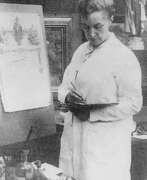

Eleanor Fortescue-Brickdale was a British Pre-Raphaelite painter, illustrator and stained glass artist.
At the age of 17, she enrolled at Crystal Palace School of Art and was later admitted to the Royal Academy of London and she initially worked with illustration. In 1897, Eleanor won a prize for her painting "Spring", which allowed her to begin work on her first large-scale oil painting, "The Pale Color of True Love". The painting was exhibited at the Royal Academy in 1899.
In 1902 Eleanor Fortescue-Brickdale was elected the first female member of the Institute of Oil Painters. She illustrated many books, including Tennyson's Royal Idylls in 1911. She taught at the Byam Shaw School of Art in Kensington. During the First World War, the artist designed posters for government departments and later several commemorative stained glass windows and a memorial in York Cathedral. In 1919 she became a member of the Royal Society of Watercolor Painters.


Joseph von Führich was an Austrian painter.
Führich was an adherent of the Nazarene movement, a romantic religious artist who sought to restore the spirit of Dürer and give new shape to biblical subjects. Without the power of Peter von Cornelius or the grace of Johann Friedrich Overbeck, he composed with great skill, especially in outline. His mastery of distribution, form, movement and expression was considerable. In its peculiar way his drapery was perfectly cast.


Nikolai Nikolaevich Ge (Russian: Николай Николаевич Ге) was a distinguished Russian painter, whose contributions to the world of art are celebrated for their emotional depth and philosophical introspection. Born in 1831, Ge's work spans a variety of themes, including religious, historical, and psychological subjects, making him a versatile artist in the realm of 19th-century Russian culture. His paintings are known not just for their aesthetic appeal but also for their ability to provoke thought and evoke deep emotions.
Ge's art is marked by its intense exploration of moral and spiritual questions, distinguishing him from his contemporaries. One of his most famous works, "The Last Supper" (1863), showcases his ability to infuse traditional religious scenes with a new level of emotional intensity and humanism. This painting, along with others like "Christ in the Garden of Gethsemane" (1868), reflects Ge's deep engagement with the themes of suffering, redemption, and the human condition. His approach to these universal subjects has earned him a special place in the canon of Russian art, making his works highly sought after by collectors and experts in art and antiques.
Ge's contributions to art extend beyond his individual works. His commitment to portraying the human experience with honesty and depth has influenced generations of artists. His paintings can be found in prestigious galleries and museums, serving as a testament to his enduring legacy. For collectors and art aficionados, Ge's work represents not only an investment in Russian culture and history but also an ongoing exploration of the depths of human emotion and spirituality.
For those interested in the profound and moving art of Nikolai Nikolaevich Ge, staying informed about new discoveries, sales, and auction events related to his work is essential. Sign up for updates to ensure you never miss an opportunity to engage with the legacy of this remarkable artist. This subscription will exclusively alert you to new product sales and auction events related to Nikolai Nikolaevich Ge, keeping you connected to the very best of Russian art and culture.
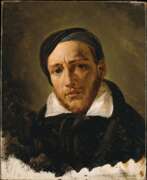

Jean-Louis André Théodore Géricault was a French painter and lithographer, celebrated for his pivotal role in the Romantic movement. Born in Rouen, France, in 1791, and educated among the elite in Paris, Géricault developed a profound connection with art from a young age, influenced by his training under notable figures like Carle Vernet and Pierre-Narcisse Guérin. This foundation set him on a path that diverged significantly from the classical traditions of his time.
Géricault's artistry is best known for its vibrant energy and emotional intensity, characteristics that marked a departure from the Neoclassical style predominant in the early 19th century. His most famous work, "The Raft of the Medusa" (1818–19), is a monumental canvas that dramatizes the tragic aftermath of the French shipwreck, Méduse, capturing the public and critical imagination for its raw portrayal of human despair and resilience. This painting not only criticized the French government but also showcased Géricault's masterful handling of drama, becoming an iconic symbol of Romanticism.
Throughout his career, Géricault remained deeply engaged with contemporary issues and the human condition, exploring themes of mental illness, social injustice, and the raw power of nature versus human vulnerability. His series of portraits depicting patients with mental illnesses, created towards the end of his life, highlighted his empathy and innovative approach to capturing human emotion and psychological depth.
Géricault's fascination with the dynamic forms and emotional potential of horses also led to some of the most stirring equestrian art of his time, reflecting his personal passion for horseback riding and his exceptional understanding of equine anatomy. This interest is evident in works like "A Horse Frightened by Lightning", showcasing his ability to capture motion and emotion in both human and animal forms.
Despite his premature death at the age of 32, Géricault's legacy endures, with his works residing in prestigious institutions like the Louvre in Paris. His artistic vision and dedication to portraying the realities and turbulences of his era have cemented his status as a pioneer of Romanticism, influencing subsequent generations of artists, including his contemporary and friend, Eugène Delacroix.
For collectors and experts in art and antiques, Géricault's oeuvre offers a profound insight into the Romantic spirit, embodying the tumult, passion, and innovation of an era on the cusp of modernity. His works continue to inspire and captivate audiences, reminding us of the power of art to provoke thought and evoke deep emotional responses.
To stay updated on exhibitions and auction events featuring Géricault's works, sign up for updates. This subscription will keep you informed on new discoveries and sales related to this influential artist, ensuring you never miss an opportunity to engage with the legacy of Jean-Louis André Théodore Géricault.
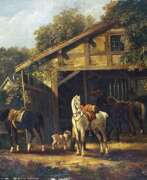

Johann Conrad Gessner was a Swiss battle painter and lithographer.
He studied painting first with his artist father Solomon Gessner (1730-1788), then at the Dresden Art Academy, before traveling to Naples and Rome. Back in Germany, Gessner became known for his equestrian and battle scenes, and his drawings and watercolors already had features of early Romanticism.
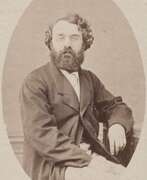

Eugène Gluck, full name Louis-Théodore-Eugène Glück, was a French painter, illustrator and lithographer.
He studied lithography in Strasbourg and there he created his first important work, a series of 52 plates depicting the procession of the Gutenberg feast celebrated on June 24, 1840. During his long artistic life, Gluck created many paintings of historical, battle and genre subjects, painted landscapes and portraits. From 1862, Gluck created earthenware for the factory of the brothers Xavier and Theodor Deck.
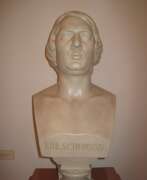

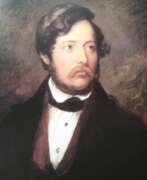

Franz Jakob Julius Götzenberger was a German painter of the first half of the 19th century. He is known as a muralist who specialized in chamber portraits and frescoes with mythological subjects.
Götzenberger spent most of his career in England, but also studied and worked in Rome and Naples. Together with other artists, he created frescoes at the University of Bonn and the church in Nierstein. The master is also known for his pencil portrait of the composer Frédéric Chopin. In 1847, he went to England, where he obtained citizenship and created many portraits and murals.
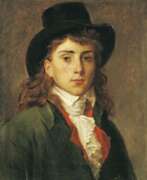

Antoine-Jean Gros was a distinguished French painter, renowned for his contributions to neoclassical and pre-romantic art. Born on March 16, 1771, in Paris, Gros embarked on his artistic journey at a young age, initially learning from his father, a miniature painter. His talent blossomed under the tutelage of Jacques-Louis David, one of the era's most revered artists. Antoine-Jean Gros's work gained significant acclaim with his portrayal of Bonaparte, particularly in "Bonaparte at the Pont d'Arcole" and "Bonaparte Visiting the Plague Victims of Jaffa," which showcased his ability to blend historical narrative with dramatic intensity.
Throughout his career, Antoine-Jean Gros's paintings captured the essence of significant historical moments, often featuring Napoleon Bonaparte. His works are celebrated for their dynamic compositions and emotional depth, earning him a place among the pioneers of the Romantic movement in art. Despite achieving fame, Antoine-Jean Gros struggled with the artistic transition during the post-Napoleonic era, eventually leading to his tragic demise in 1835. His legacy, however, continues to influence the realms of neoclassical and romantic art, underscoring his pivotal role in the transition between these two significant art movements.
For collectors and experts in art and antiques, Antoine-Jean Gros's oeuvre offers a fascinating glimpse into the evolution of 19th-century French painting, embodying the intersection of historical narrative and artistic innovation. His works, housed in prestigious institutions like The Louvre and the Palace of Versailles, remain pivotal in understanding the artistic landscape of his time.
If you're a collector or an expert in art and antiques and wish to stay updated with the latest news and events related to Antoine Jean Gros's works, consider subscribing for updates. This subscription will ensure you're informed about new product sales and auction events featuring Gros's masterpieces, helping you stay connected with the evolving market and opportunities to enrich your collection.
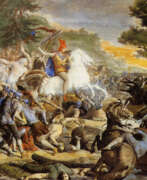

Friedrich Gunkel was a German painter. Gunkel studied at the Academy in Kassel. Here he was a student of Ludwig Emil Grimm and Friedrich Wilhelm Müller and was soon considered the best student in the drawing class. He went to Berlin and worked in the studio of Peter von Cornelius as his assistant. From May 9, 1847, he lived in Rome as a German Roman and became a member of the German Association of Artists. In 1856 he formed a community with the sculptors Gustav Kaupert and Heinrich Gerhardt and the painter Heinrich Dreber. Gunkel's most famous work was the Hermannsschlacht, a monumental history painting that the Bavarian King Maximilian II had commissioned in 1857 for the Maximilianeum and that Gunkel completed in Munich between 1862 and 1864. Destroyed in World War II, it survives only in photographs and reproductions.
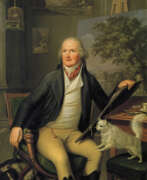

Jakob Philipp Hackert was a German painter of the second half of the 18th and early 19th centuries. He is known as a landscape painter and printmaker, a representative of neoclassicism and romanticism.
Hackert reached the peak of creative activity in 1770-1780. He was recognized by the European aristocracy, and for a time served as court painter to King Ferdinand IV of Naples, as well as receiving commissions from representatives of the Russian imperial family, such as Empress Catherine II and the heir to the throne, Paul Petrovich. His work, according to critics, was characterized by high craftsmanship and aristocratic elegance.


Louis Gallait was a Belgian painter. He lay at the basis of a revival of history painting in Belgium. He earned his reputation especially with the large painting of Charles V's abdication. Gallait's works were esteemed because of their realism, faithfulness of the costumes and color composition of his paintings. He was also a distinguished portrait painter.


Rudolf Hausleithner was an Austrian painter.
His works primarily include oil paintings with romantic themes, portraits and portrait sketches, petit bourgeois subjects, history paintings and various commissioned works.


Michael Angelo Hayes was an Irish animal and battle painter.
Hayes became best known for large-scale war scenes such as The Lancers Breaking the Square at Aliwal (1846) and The Attack of the Light Dragoons at the Battle of Muddy (1847), where he was able to convey his fascination with depicting the horse in motion.
Hayes spent many years studying with scientific pedantry the movements of the horse in a gallop and eventually published a pamphlet. His work in this area brought significant changes to the technique of depicting horses in painting, which was the subject of much controversy in the mid-nineteenth century. Hayes's innovation made it possible to convey a sense of movement and speed on canvas.
